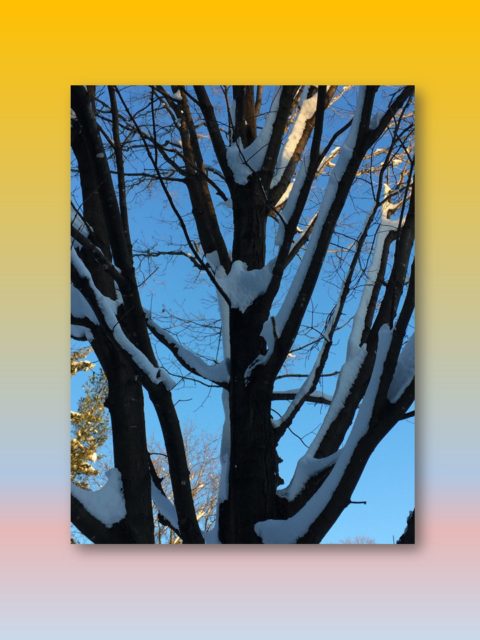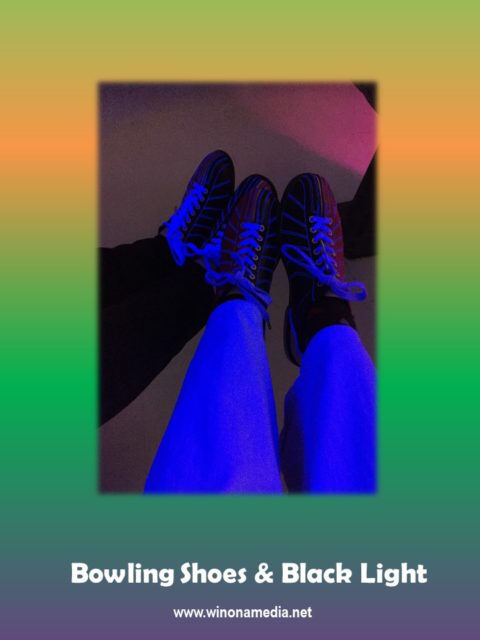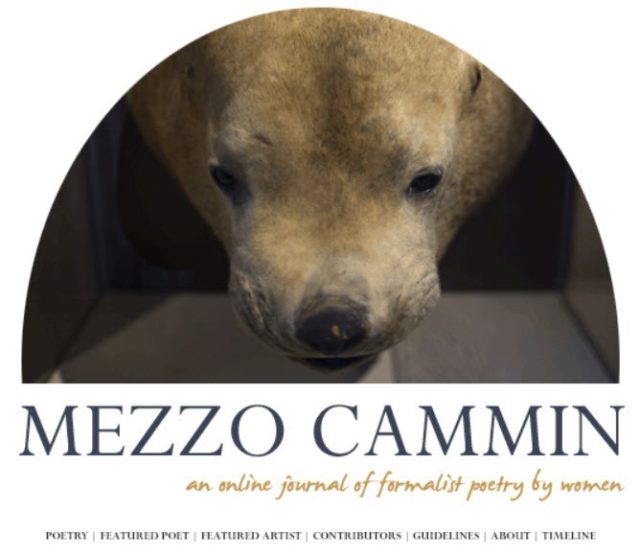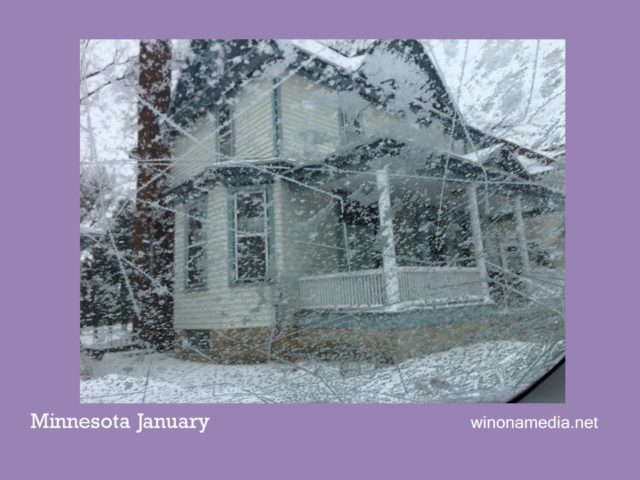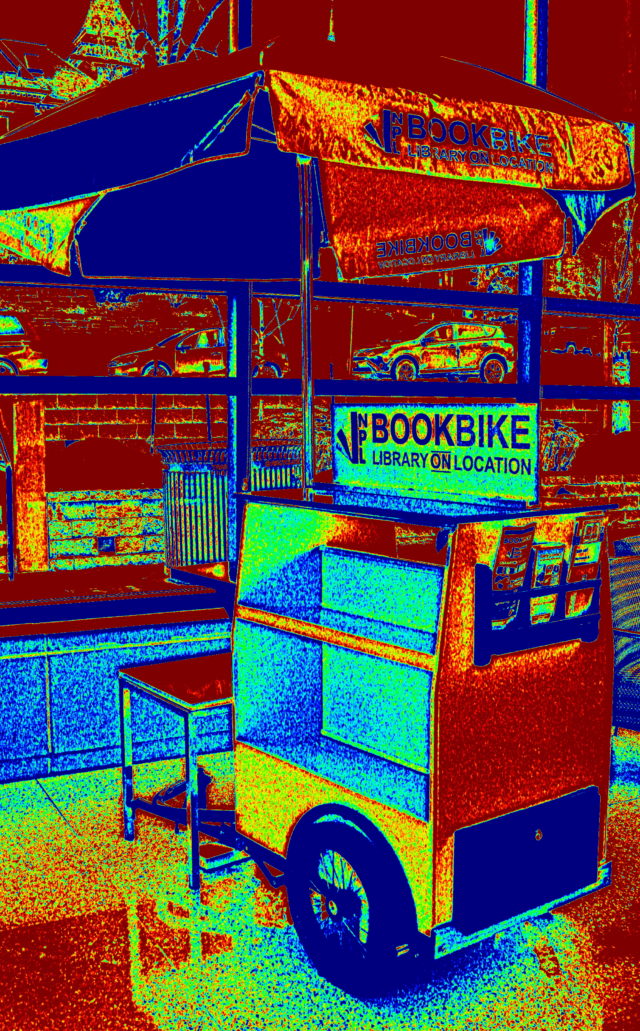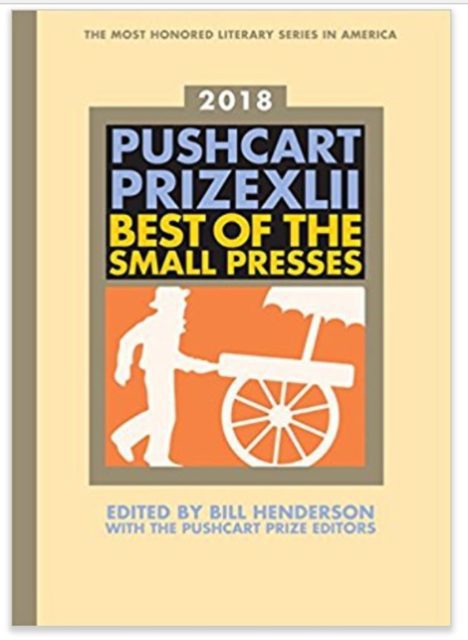Monthly Archives: January 2018
Postcard: January 22, 2018
News Flash! The New Issue of MEZZO CAMMIN Is Up & Includes Five of My Own Poems
I am pleased to share with you that the new issue of Mezzo Cammin: An Online Journal of Formalist Poetry by Women had just been published. It is full of work that intrigues and excites me by twenty different poets, each with a distinctive voice and approach to engaging with formal traditions. Here you will find excerpts from a sonnet sequence about Julian of Norwich (by poet Michelle Blake) to a pantoum for Frieda and a skillful modern example of a concrete poem (by poet Stephanie Noble), and so much more. I encourage you to browse in this rich field of words.
My own poems can be found HERE. The first poem, “Two Voices in a Starbuck’s,” was inspired in terms of tone, subject, and structure by Richard Wilbur’s masterpiece, “Two Voices in a Meadow.” It is a poem I love, long ago committed to memory, and will recite any time, anywhere! Click HERE to see it as it originally appeared on August 17, 1957 when it was published in The New Yorker. The other four–all sonnets–were sparked by small moments of insight below the surface of daily life. “Echo at Hug Point,” was sparked by a childhood memory of being with my father when I was eight or nine years old. “Speed on to Spica” mulls over ideas of light–celestial, human-made, and the kind conveyed by consciousness. “Magnetic Letters” sprang out of one of those surprises we all get when things that have gone missing are suddenly found. “For My Daughter, Leaving Home” was sparked when I was driving home one evening a couple of years ago from the Cities; Julia was with me, and, as we watched a flock of sparrows rise against the twilit sky, the rhyme “starling/darling” popped into my head.
Hoping your day is filled with joy and the deep, quiet beauty found in everyday life!
LESLIE
(Stairwell, Harry Houdini Museum, Appleton, WI)
Postcard: January 15, 2018
News Flash! One of My Poems Was Nominated for a Pushcart Prize
Pushcarts in January are in short supply in small Minnesota towns. Local readers might recognize the iconic “Book Bike” in the new atrium of the Northfield Public Library, parked under Rob Hardy’s engraved lines celebrating the spirit of our community. I share this image to celebrate another manifestation of community: I learned in the early days of this year that one of the poems I published last year was nominated last autumn for a Pushcart Prize.
When your work is nominated for a Pushcart Prize you know two things absolutely: first, that there is at least one professional out there who truly believes in what you’ve done; and, second, that the odds against actually winning are steep–Rocky Mountain steep. Himalayan-steep. (In poetry, for example, for the 2015 (the 39th anthology, and the one I have consulted) more than 4,000 poems were nominated but only 31 were prize winners. (A further 25 cited for Special Mention but not reprinted.)) My own poem made it only to the first level of nomination.
Both of these facts make each year’s Pushcart Prize announcement a very big deal to writers, celebrating as it does the incredible wealth of fine and inventive writing (poems, fiction, essays) that is published each year in the United States by small presses. Established in 1976 (the year I stumbled onto life-changing volumes of poetry by Howard Nemerov and Sylvia Plath in the Beloit Public Library,) the Pushcart Prize is the brainchild of a disillusioned Doubleday Editor, Bill Henderson. His enduring idea has been to identify each year some of the best work published by non-commercial presses in the previous year. Nominations come from a legion of editors (each journal is allowed a total of six across all genres) and from former Pushcart Prize recipients. The founding editors included such diverse sensibilities as Buckminster Fuller and Anais Nin. Nominations for 2017 closed on December 1, and the 2018 anthology is already available through Amazon or better yet, through your favorite Indie Book Store! Mine is Content Bookstore here in Northfield. Proceeds help to fund the next year’s project.
By creating an anthology of prize winners, as well as a non-profit structure to support it, Henderson continues to draw attention to vibrancy, diversity, and vigor of the good writing we all are doing. Part of the fun of each anthology is archival, for each includes a comprehensive list, alphabetized by last name, that includes the winning genre, title, and year. Last year, I spent months reading aloud all 500 of Amy Clampitt’s poems, and I like knowing that her work is represented by two poems, “The Reed Beds of the Hackensack” (VIII) and “Grassmere” (X). Similarly, Richard Wilbur, another poet whose work has influenced my own, is represented by “Hamlen Book” (VIII). One can’t help noticing who else is not here, truly fine poets Here is a summary, with some quotes from Henderson, published by Poets & Writers three years ago, titled “Pushcart Prize Turns Forty.”
Knowing full well the great leap required to move from “nominated” writer to “prize winning writer,” I am savoring this unexpected validation. In the past forty-two years, something like 250,000 pieces of writing have been nominated. According to my humble and statistically unsound calculations, tens of millions of other fine essays, poems, and stories were not. (I have my own list of work I would champion retrospectively if I could, and surely you have yours. Perhaps that could be the subject of a future post.) But…They were written. They were published. They were read. It is thrilling to realize that excellent work is all around us, waiting for us to discover it.
My nominated poem can be accessed through the post I did in June (which includes a link to the issue of The Orchards in which “To a Former Friend, Whose Affections Are Withdrawn” was published.)
Wishing you a surprising day of joy, LESLIE

